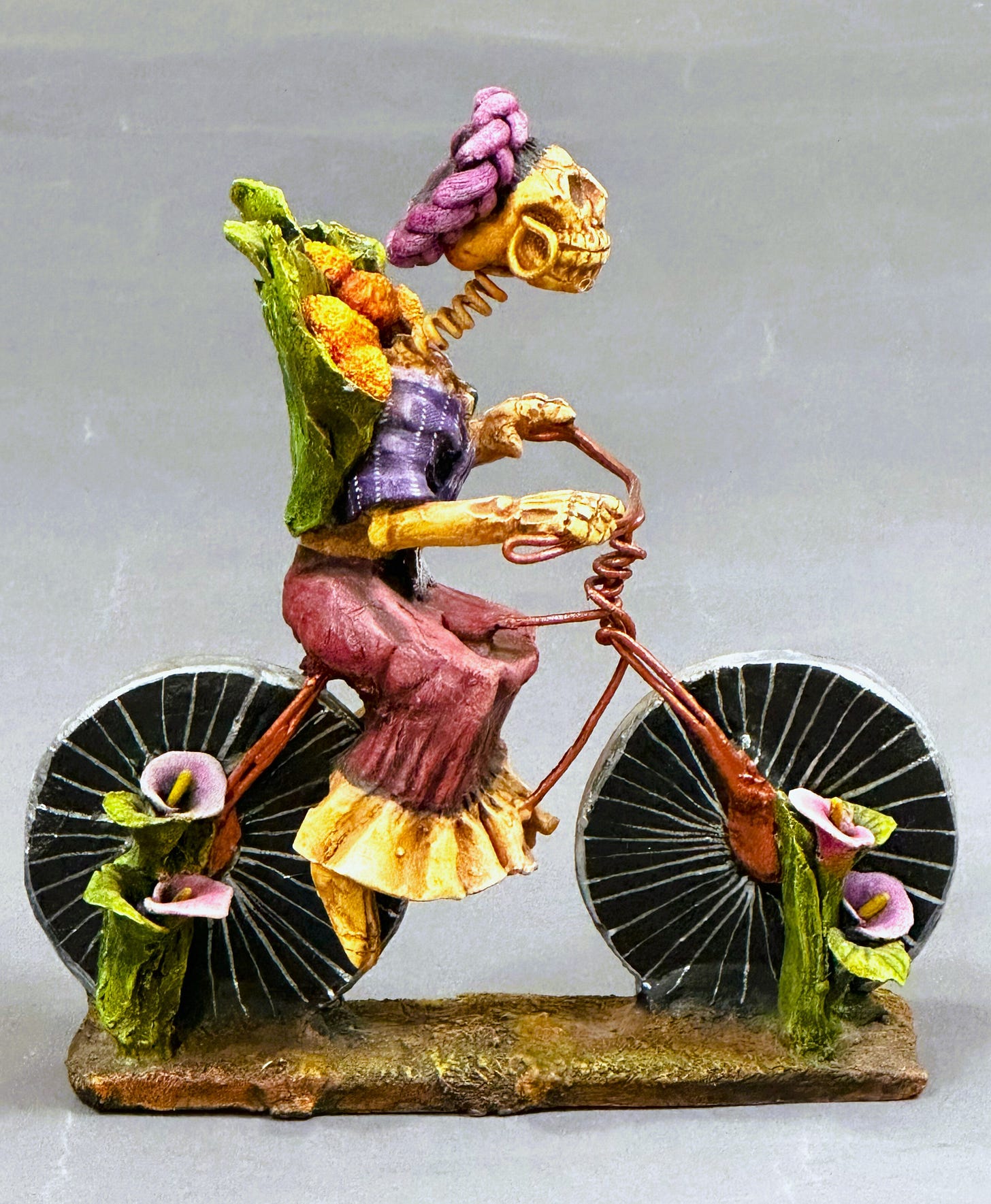Thanks to Susan Page and Galeria Atotonilco for the background and the images.
Skulls and skeletons appear with great frequency in Mexican folk art, especially around the annual Day of the Dead holiday. Nov. 1-2. The reason for this reaches far back into Mexican history. More than 500 years ago, when the Spanish conquistadors landed in what is now Mexico, they encountered indigenous communities practicing a ritual that seemed to mock death. The Aztecs kept skulls as trophies, displayed them on walls and in temples, and used them during rituals to symbolize death and rebirth. The skulls honored the dead, whom the Aztecs and other Meso-American civilizations believed came back to visit during an annual ritual. Unlike the Spaniards, who viewed death as the end of life, the Aztecs viewed it as the continuation of life. Instead of fearing death, they embraced it.
The newly arrived Spaniards considered the ritual using skulls to be barbaric and pagan and tried to eradicate it. But when, like the Aztec ancestors themselves, the ritual would not die, the Spaniards simply incorporated it into Christianity, or perhaps more likely, the Aztecs brought it with them when they were converted. The closest the Catholics could come to a similar holiday was All Saints' Day, and gradually, the two traditions merged. In about 1910 the cartoon illustrator José Guadalupe Posada created the skeleton “Catrina,” to make fun of wealthy Mexicans who thought the only worthwhile style was that of European aristocrats. That cartoon became an icon and gave rise to more skeletons in all folk art mediums.
The skulls and skeletons used in Day of the Dead altars and seen widely in Mexican folk art are not about death but rather about the duality of life and death, a statement that death is an integral part of life. Because the skeletons are never dead! They are riding bicycles, selling their wares, taking a shower, dancing, getting married, feeding their children, and generally enjoying life. They accept death and even make fun of it. Some say they are laughing at the hubris of the living, who are foolish, fearful, and unappreciative of life! “You who are living,” they seem to say, “are rejecting the joy of life. You are not embracing each other enough! Watch us!” So when you see a skeleton or skull in a piece of folk art, realize that you are viewing a powerful symbol, rife with meaning, and participating in a tradition that dates back 3,000 years or more. The duality of life and death that they represent is like the yin/yang of Mexican culture.
All Hallows Eve or Halloween also has a history. Halloween (All Hallows Eve) is a holiday observed on October 31 and noted for its pagan and religious roots, and secular traditions. In much of Europe and most of North America, observance of Halloween is largely nonreligious, celebrated with parties, spooky costumes, pumpkin carvings, and the giving of candy. But the holiday also marks the beginning of Allhallotide, a three-day Christian triduum dedicated to remembering the dead. That begins with Halloween (October 31) and is followed by All Saints’ Day and All Souls’ Day (November 1 and 2 respectively) in the liturgical calendar.
The thousand-year-old history of Halloween has roots in the Celtic harvest festival of Samhain, which was observed in ancient Britain and Ireland on November 1st.
On the day corresponding to November 1 on contemporary calendars, the new year was believed to begin. That date was considered the beginning of the winter period, the date on which the herds were returned from pasture and land tenures were renewed. During the Samhain festival the souls of those who had died were believed to return to visit their homes, and those who had died during the year were believed to journey to the otherworld. People set bonfires on hilltops for relighting their hearth fires for the winter and to frighten away evil spirits, and they sometimes wore masks and other disguises to avoid being recognized by the ghosts thought to be present. It was in those ways that beings such as witches, hobgoblins, fairies, and demons came to be associated with the day.
*The featured image is a colorful example of a couple, Catrin and Catrina.
https://galeriaatotonilcostore.com/
If you visit San Miguel de Allende, put this on your must see list.




"The duality of life and death that they represent is like the yin/yang of Mexican culture..." ~ this is a beautiful way of describing the festival. Enjoy the holiday, Gary!
We had so many lying around we had to find a use for them…